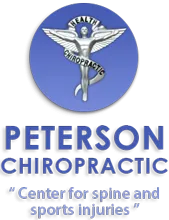In chess, checkmate occurs when a player’s king is under attack and has no safe place to go. The king is threatened and every possible escape route is blocked. Such an existential condition, an allegorical “no exit,” is known as checkmate.
In life, a person may be similarly threatened by a serious illness. For example, a person may receive a diagnosis for which there is no effective long-term treatment. Short-term, temporary solutions may be available, but these usually require enormous expenditures of resources, both financial and personal. Most often, when the temporary fix has run its course, the illness persists and the long-term outlook remains the same. Optimally, we would prefer to avoid such medical “checks” and avoid being faced with an untimely “checkmate.” As in chess, obtaining success with respect to our health and well being depends in large part on having a sound strategy in place.
Successful chess players think several moves ahead. High-level chess players such as grand masters have the ability to envision combinations involving ten or more future moves. Fortunately, being successful at the game of promoting personal health and well being is much less complicated. There are only a few elements involved in developing a strategy that works.
These elements are well known and include (1) regular, vigorous exercise; (2) a healthy diet1; (3) sufficient rest; and (4) a positive mental attitude. But despite being well known, only the minority of people actually implements these critical “moves.” The evidence for such lack of action may be seen in the United States, for example, where one-third of Americans are overweight and additional one-third are obese. Merely knowing something is not sufficient to obtain a result.
What is required is actual action.2 In terms of exercise, evidence-based guidelines agree that 30 minutes of vigorous exercise, done five days a week, will provide a sound foundation for health. Optimally, such exercise consists of both cardiovascular and strength training sessions, but the most important point is to do five 30-minute sessions per week. With respect to diet, all the evidence affirms that men, women, and children should follow specific calorie-intake guidelines.3 For example, a moderately active man, aged 31-50, should consume, on average, 2500 calories per day. A moderately active woman, aged 31-50, should consume, on average, 2000 calories per day. A man intending to lose weight, and then maintain an ideal weight, should take in about 1800 calories per day. A woman intending to lose weight, and then maintain an ideal weight, should consume about 1600 calories per day. Regarding daily food intake, the most important rule to follow is to consume at least five portions of fresh fruits and vegetables per day. It is also important, on a daily basis, to eat foods from all the major food groups. In terms of rest, most people require seven to eight hours of sleep a night. This may not be possible every night, of course, but over time people need to obtain the right amount of rest for them. The criterion is simple: if you do not feel rested after a night’s sleep, then you did not obtain sufficient sleep. Obtaining sufficient rest is an often-neglected component of a well-rounded health and wellness strategy.
Our strategy for helping ensure our long-term health and wellness contains only a few components, and involves many less moves than does a winning chess strategy. It should be easy to put such a strategy into place. What is required is a commitment and dedication to ourselves, our families, and our loved ones.
1Voeghtly LM, et al: Cardiometabolic risk reduction in an intensive cardiovascular health program. Nutr Metab Cardiovasc Dis 23(7):662-669, 2013
2Carson V, et al: A cross-sectional study of the environment, physical activity, and screen time among young children and their parents. BMC Public Health 2014 Jan 21;14:61. doi: 10.1186/1471-2458-14-61
3Wang YC, et al: Reaching the healthy people goals for reducing childhood obesity: closing the energy gap. Am J Prev Med 42(5):437-444, 2012
